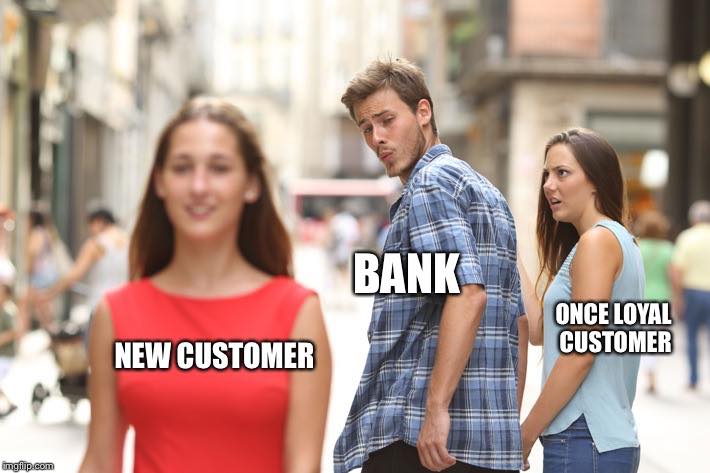Home ownership dream still alive!
- By proadAccountId-384574
- •
- 31 Jan, 2017
- •
The secret of getting ahead is getting started....

I am increasingly annoyed with articles that promote home ownership as an unattainable goal for the younger generations…..and media reports of booming property prices don’t help with the perception that home ownership for the under 30’s is out of reach. Well I am here to tell you that the great Australian dream of home ownership is still alive & attainable…. and that approximately 70% of family’s in Australia own or are paying off their own homes. And this figure has remained constant over the decades. In 1966 the Australian Bureau of Statistics reported that 71% of owner occupied dwellings were either owned outright or owned with a mortgage. Since then the rate of Home ownership, as reported in the Census, has fluctuated between 68 & 70%. Looking back now to when I brought my first home I think gee, how cheap was that….the reality at the time was that it was at the top of what I could afford, interest rates were at 18% and I doubted whether I would ever pay it off! It seemed a huge risk at the time.
Buying a home for most people will be the biggest financial commitment they undertake. The reality is it’s a huge commitment with many obstacles to overcome and sacrifices to make, however with the right advice and a solid financial plan it is certainly within most people’s reach. As for rating home affordable in your location, the best method is to divide the median house price by median Household income. i.e. $324,000/$60,600 = 5.35. So this example indicates a ratio of 5.35 of annual income to the average purchase price of a house.
Next consider the cost of home loan repayments vs the cost of rent. First let’s look at weekly repayments for a home valued at $324,000. Now for this I have used an interest rate of 4.80%, with a 20% deposit over 25 year period. I have added $12K to the loan amount to cover cost’s incurred such as legal & stamp duty. So the total amount borrowed is $ 272K. The weekly amount to be repaid using the money smart mortgage calculator is $362.00. You would also have budget for additional annual costs of $3k for insurance & rates.
Compared to the cost of renting a 3 bedroom house which would vary from $ 280 to $ 380 per week depending on the condition, features & location of the property.
With age comes wisdom and this piece of advice is a pearler….’’it’s not the timing of the market, it’s your time in the market’’. Property is a long term investment. The one lesson I learned along the way is that there are booms and then there are periods of where prices remain static….and no expert or adviser will be able to state when one begins or ends.
The period from 2000 till 2010 in the Warrnambool property market saw a huge spike in property values with capital growth 150%. The people that were in the market before 2000 and stayed in it, are the ones who gained the most from this spike.
My next piece of advice is be willing to compromise. As it can be a long and protracted search to find a property that ticks all your boxes, it’s better to compromise on price than say location. Don’t fall in to the trap of doing the deal, particularly us blokes. We get so caught up in the game of doing a deal that we can lose sight of the end goal of buying a home. If you find a property that ticks all boxes, however it $ 8k above the going rate, the vendors aren’t willing to budge, and you can afford it, then buy it…..because in ten or twenty years’ time that $8k will seem like peanuts.
I mentioned earlier about getting the right advice so I strongly recommend utilising the moneysmart website www.moneysmart.gov.au. It provides impartial advice and the tools required for you to tackle your financial goals. And of course contact me…Rod Donnelly on 0437 776623 for advice and guidance in realising your home ownership dream.

So you’ve found your dream home, but it’s in need of a little TLC. While others may see this as a deterrent, this is actually a great opportunity to nab the house of your dreams at a price tag that’s within your means. Here’s how to tactfully negotiate the price without ruining your chances of securing the property.
Tip #1: Never Enter a Negotiation Empty - Handed
Whether it’s hiring inspectors for a building and pest report, or obtaining quotes from tradespeople, obtaining facts and figures will give you ammunition when requesting a price reduction.
“Even if it costs you extra, it’s worth getting all the information before making your offer. People often underestimate how much repairs will cost,” says a real estate agent.
Tip #2: Separate Your Emotions
The most tactful way to negotiate is to eliminate all emotions, advises the agent. “Try to separate yourself from the outcome and present your side logically. The owner is under no obligation to accept what you offer, no matter how well you present your points . So if things don’t go your way, being negative won’t do you any favours.”
Tip #3: Remember This Is Someone Else’s House
Negotiation is a two - way street, so in order to come to an agreement, concessions will have to be made on both sides. “Try to understand what is important to the owner,” advises the agent. “What can you offer to counteract the price reduction you’re after? Perhaps a longer settlement period so they can find a new home? It’s little enticements like this that can often be much more valuable than a couple of extra dollars.”
Tip #4: If You Don’t Ask, the Answer Is Always Going to Be No
“I’ve heard a lot of weird and wonderful requests when it comes to purchasing a house, so really you can ask for anything. Whether or not it will be accepted is another thing,” advises the agent.
From wanting certain fixtures included in the sale price, to extra inspection requests, you won’t know what the owners are happy to give if you don’t voice your desires. However, before you go wild with request s, think about what is most important to you, as realistically the owners aren’t likely to budge on everything.
“In theory, you can inspect a property as many times as you like. In practice though, it will depend on your agent’s availability and whether or not the owner is currently living in the property,” says the agent. “You might put off the owner if you are constantly disrupting their day, so as an alternative I’d suggest visiting the street at different times during the week. You don’t have to enter the actual home to get a vibe of what the neighbourhood is like.”
A house that requires a bit of repair work is a great bargaining tool and generally an opportunity to secure a good price. With the advice of industry professionals, securing your dream home may be closer to a reality than you think.

The last 12 months have seen a lot of changes particularly in the interest only lending scenarios. And mortgage brokers and borrowers have had to adapt to the new landscape. We certainly didn’t foresee the rate rises in interest only loans of .25% to .5% and the likehood is that in the near future this gap could increase!
APRA is driving this change!
Most of the banks have made changes to their interest only policy and pricing because of limits put in place by APRA. Naturally we don’t like having our options limited, or any added complexity to choosing the right loan, however it’s important to review & adapt your lending strategy to this new landscape.
The drivers for APRA to these changes are:
· Australia is addicted to interest only loans, this is a risk for both the banks and our housing market.
· Few borrowers are aware just how much more interest they’ll pay with an interest only loan.
· There are many people making interest only repayments even though it’s totally unsuitable for them.
In other words, it’s time to adapt your current lending strategy, rather than complain about higher interest only loans.
Great questions lead to great recommendations
At Focus Loan Choices we get to know our customers by conducting a personalised needs analysis. We identify what’s important and weather an interest only loan is suitable by asking what’s more important for you:
· A lower rate or lower repayments?
· Higher borrowing power or a lower rate?
· Do you need to reduce your repayments in the short term?
If a lower rate or a higher borrowing power is more important to a customer, then they should probably be paying P&I.
Owner occupied loans with interest only repayments
As a general rule, this is an unsuitable option for most clients and you should only consider this if there’s a good reason to do so.
Usually this type of scenario is unlikely to benefit from interest only repayments and potentially, they may not pay off their home loan at all.
It’s time to talk to non-conforming lenders
At Focus Loan Choices , we consider investment loans to be a type of non-conforming loan. That’s not to say that banks don’t do them. They’re just not the flavour of the month and you need to consider specialist lenders as well as major ones to meet the needs of property investors.
What do the numbers say?
As an example if your deciding between a $500,000 investment loan at 4.5% over 30 years, or a loan at 5% for 5 years with interest only payments reverting to 25 years at 4.5% with P&I repayments.
Firstly the repayments are $2,533 / month P&I compared to $2,083 / month interest only. So the payments are 21% higher if they pay P&I. At the end of the interest only period the repayments would be $2,779 which is 9% higher than the standard P&I repayments over 30 years. Few customers are aware of this and even fewer consider the effect that this will have on their cash-flow.
Paying P&I, the customer would make total payments of $912,034 whereas, with a 5 year interest only period they’d pay $958,749. That’s a whopping $46,715 in additional interest! Again few customers are aware of just how much more it will cost them.
A good rule of thumb is that a 5 year interest only period will cost a customer 11% more in interest over the term. That’s assuming, of course, that they don’t get another interest only period when their first one expires.
What about borrowing power? If a single borrower with an income of $100,000 takes out a home loan, then they can borrow around $620,000 with P&I repayments or $585,000 with a 5 year interest only period. It’s not a huge deal, only a 6% difference. For customers with multiple properties, it can have a much bigger effect.
What about your existing Lending?
Should you refinance to the cheapest interest only loan available if they’re not happy with their bank? Probably not. Variable rates can be changed at any time, so what’s to stop the new bank putting their rates up?
However, it’s now time to switch to P&I. I encourage all investors to review theircurrent lending and consider either switching to a P&I loan, refinancing to another lender with P&I payments, or if they do want to pay interest only, then fixing their rate may be a good idea.
Need help or require further information then contact your local MFAA accredited Finance Broker Rod Donnelly on 0437 776623.

Published by MFAA
Refinancing your assets to renovate a property is a significant decision that will hopefully improve your standard of living or add substantial value to your property.
Refinancing isn’t as straightforward as you might expect. The type of renovation proposed goes a long way to dictating the loan required. If the wrong loan is chosen, you could be left with a pile of unexpected debt.
Know your budget
Before considering refinancing, you need to have a clear idea of your budget.
If you underestimate your budget, you run the risk of getting knocked back from your lender, according to Rod Donnelly an MFAA accredited Finance Broker.
“I know a lot of homeowners who have estimated a budget of say $100,000 to do renovations, only to discover it will cost a lot more,” the broker says.
“This means you may have to reapply for the loan, which banks generally don’t like.”
“Be conservative with your projection. If you think you need $100,000, I’d recommend to apply for $150,000 just in case, if you can afford it. The key is stick to your budget,” adds the broker.
The next step is to speak to your broker to determine which loan will suit your needs and objectives.
Line of credit loan (Home equity loan)
Also known as an equity loan, to be eligible, one must be looking to make upgrades to the cosmetic domain of their property.
Installing a new bathroom or kitchen, painting the interior or exterior of the house and other basic construction falls under a line of credit loan.
These renovations, more often than not, do not supersede the costs of structural changes, so homeowners can call on up to 80 per cent of their Loan-to-Value Ratio (LVR).
A line of credit loan is a “revolving door” of credit that combines your home loan, daily spending and savings into one loan.
To calculate the value you can borrow, subtract your current loan balance from your property value and then multiply by 80 per cent. For example, if your property is worth $500,000, and you have $250,000 left on your loan, your home equity is $250,000. You then multiply this total by 80 per cent. If you’re uncertain of your home value, contact an Rod Donnelly a Finance Broker who can assist you to arrange for an appraisal or valuation. For Loan calculators, click Here.
If you choose a line of credit home loan, it essentially works as a large credit card. You can use it to purchase cars, cosmetic renovations and other investments. However, the interest-only charge starts when the equity is drawn down.
Keep in mind, line of credit loans provide you with money that can gather interest quickly, so if you are ill disciplined with budgets or money, speak to Rod Donnelly from Focus Loan Choices for a plan that matches your unique circumstances.
Construction loans
Construction loans are suitable for structural work in your home, for example, if you’re adding a new room or making changes to the roof.
Construction loans give homeowners the opportunity to access larger sums of money, with the amount dependent upon the expected value of the property after renovations are completed.
The advantage of a construction loan is that the interest is calculated on the outstanding amount, not the maximum amount borrowed. This means you have more money available in your kitty, but only pay interest on the money you choose to spend. For this reason, the broker may recommend that you apply for just one loan, but leave some leeway in your borrowed kitty.
When applying for a construction loan, council approval and a fixed price-building contract are required, which an MFAA finance broker can assist with to reduce the paperwork and stress.
Your lender will appoint an assessor to value your construction at each stage of the renovation. This will happen before you pay your instalment. When construction is complete, speak to your mortgage broker as you may be able to refinance back to the loan of your choice.
When looking at both these loans, the broker says consumers can call on other property they own to boost their overall borrowing amount if they wish.
“Depending on the client, they can use other property to get a line of credit and a construction loan. Or they might get a typical construction loan if there is going to be an extensive framework change on the building,” the broker says.
Broker advice
If you speak to a broker they will be able to determine which loan will give you the options you seek. This advice is essential, as a poorly planned construction loan could cost you more down the road.
“Consumers should ask their broker, ‘What type of loan am I eligible for?’, because if you don’t get your construction loan right, you may be jeopardising your bank security,” the broker says.
While these specific options can be discussed with your broker, if they aren’t suitable, there may be other options available to you. Speak to an MFAA Accredited Finance Broker to make your grand renovation plans a reality.







